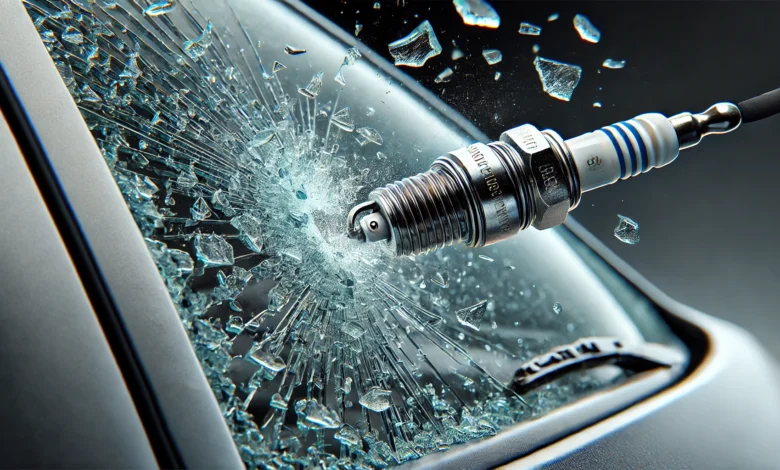Why Does a Spark Plug Break Glass? | Understanding the Science Behind It

You may have heard stories or seen in movies where a spark plug is used to shatter a car window effortlessly. It seems almost like a trick or magic, but there’s real science behind it. Understanding why does spark plug break glass requires diving into the principle
Understanding the Nature of Glass
To grasp why a spark plug can shatter glass, it’s essential to understand the type of glass commonly used in car windows and how it behaves under stress. Most car windows are made of tempered glass, a type of safety glass processed by controlled thermal or chemical treatments to increase its strength compared to normal glass.
Tempered glass is designed to be much stronger than regular glass. The process of tempering involves heating the glass to a high temperature and then rapidly cooling it. This process puts the outer surfaces of the glass into compression and the interior into tension. The result is glass that is not only strong but also engineered to shatter into small, blunt pieces rather than sharp shards if broken, reducing the risk of injury.
However, the very properties that make tempered glass strong also make it vulnerable to specific types of stress, particularly when applied with a sharp object to a small area. This is where the spark plug comes into play.
The Role of the Spark Plug’s Ceramic Tip
A spark plug has a ceramic tip that is incredibly hard and sharp. Ceramic materials are known for their hardness and brittleness, which means they can apply a concentrated force to a very small area. When you strike tempered glass with the ceramic tip of a spark plug, you are applying a small but highly concentrated force.
This force is enough to create a stress point that can overwhelm the compressive strength of the tempered glass. The glass is already under internal tension, and when this tension is disrupted by the sharp, hard impact of the ceramic, it causes the glass to shatter instantly.
Why does spark plug break glass with such ease? It’s all about how tempered glass is engineered. The glass is strong when force is applied over a broad area, such as when it’s hit with a hammer or similar blunt object. However, when force is applied to a small, concentrated area, especially with a sharp object like the ceramic from a spark plug, the glass cannot distribute the stress, leading to a sudden and complete failure of the material.
The Specific Mechanics of Glass Shattering
When the ceramic tip of a spark plug strikes the glass, it creates microcracks at the point of impact. These microcracks rapidly propagate due to the tension within the glass. Since tempered glass is designed to shatter completely when broken, these cracks quickly spread across the entire pane, causing it to break into many small, relativel
This shattering occurs almost instantaneously, and because the energy is distributed across the entire surface of the glass, the breakage is clean and complete. This phenomenon is why even a relatively weak throw of a spark plug can result in the glass shattering entirely, whereas a blunt object would requir
Misconceptions and Real-World Applications
There are several misconceptions surrounding the idea that a spark plug can break any glass. While it is true that the ceramic tip is highly effective against tempered glass, it does not have the same effect on all types of glass. For instance, laminated glass, which is often used for car windshields, consists of two layers of glass with a plastic interlayer. This construction makes laminated glass much more resistant to shattering, even when struck with a sharp object like a spark plug.
Understanding why does spark plug break glass is not just a matter of scientific curiosity; it has practical implications as well. In emergency situations, such as being trapped inside a vehicle, knowing that a spark plug can be used to break a side window could be life-saving. However, it’s crucial to note that using this knowledge irresponsibly, such as for illegal activities, is highly discouraged and punishable by law.
Conclusion: The Intersection of Science and Practicality
The ability of a spark plug to break glass is a remarkable example of how material properties and engineering intersect. The sharp, hard ceramic tip of the spark plug is perfectly suited to exploit the specific vulnerabilities of tempered glass, making it a surprisingly effective tool for breaking windows.










